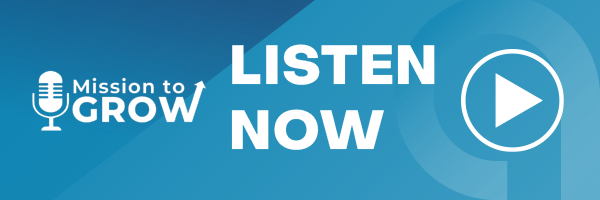“It’s crucial to hold your most valuable people accountable to high-value tasks, not just busy work.”
In episode #121 of Mission to Grow, the Asure podcast that serves as small business owners’ guide to cash, compliance, and the War for Talent, Greg Crabtree, Partner at Carr, Riggs & Ingram, sits down with host Mike Vannoy to discuss the intricate dynamics of business growth, staffing strategies, and labor efficiency. Greg shares the challenges companies face when scaling, particularly between the critical revenue thresholds of $1 million to $5 million, the concept of the “black hole,” the significance of labor efficiency ratios, and practical advice for breaking through growth plateaus without overstaffing.
- The Maturing Funds and Market Dynamics: As funds mature, companies will need to roll off assets, presenting new challenges and opportunities. Special Purpose Acquisition Companies (SPACs) could emerge as a solution for private equity firms looking to offload portfolios, highlighting a significant demand for publicly traded companies amidst a shortage.
- Understanding Growth Plateaus: Discussing the realities of hitting growth plateaus, particularly when transitioning from a $1 million to a $5 million revenue model. Key insights on why businesses struggle between the $2.5 million to $3 million mark, often referred to as the “black hole.”
- Staffing Strategies: The importance of strategic staffing versus overstaffing, particularly in the early stages of growth. Recommendations on pushing team limits to maximize potential before making staffing changes, and the risks of adding staff prematurely.
- Labor Efficiency Ratio (LER): Introduction to the concept of LER and its application in measuring productivity across teams. Discussing how to benchmark productivity for employees, particularly in service-oriented businesses where tracking output can be challenging.
- The Employee Lifecycle and Productivity: A breakdown of the employee lifecycle into three zones: Training Zone, Chasing Zone, and Replacement Zone. Insights into how to manage and assess employee performance as they progress through these zones, including strategies for compassionate transitions when necessary.
- Navigating Growth and Change: Personal anecdotes about navigating growth challenges and making strategic shifts to drive company performance. Emphasis on continuous evaluation of staff roles and ensuring the right people are in the right positions to support growth objectives.
- Best Practices for Employee Management: Tips for handling underperforming employees, including the concept of “mindful transitions” for those who may no longer fit the company’s needs.The importance of maintaining a positive company culture during transitions to ensure team morale and continued growth.

